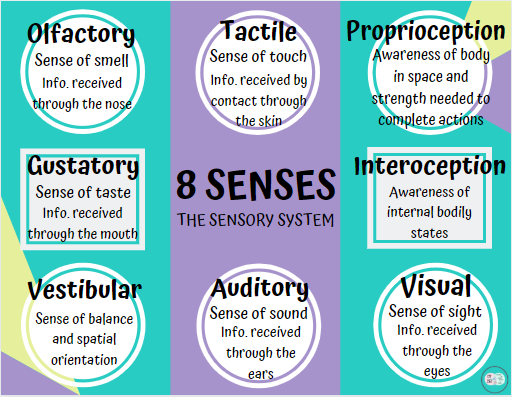
What is sensory meltdown and how to cope with it
What is sensory meltdown and how to cope with it

Here’s an example to illustrate the difference between a person without SPD and a person with. If your hearing informs you that a scene on TV is too loud, then you can easily get up and turn the volume down. Or perhaps the sun is too bright, making it hard to see or to pay attention to what someone is saying because you’re distracted. So, you put on sunglasses and resume the normal conversation.
How to Tell the Difference Between a Sensory Meltdown vs Temper Tantrum
1. Intensity of tantrum
No doubt that tantrums can be intense, but kids usually have a level of awareness during a tantrum. A tantrum may include screaming, stomping, or hitting to try and get whatever they want. Similarly, meltdowns may have the same, but they will start at 100 and continue to escalate.
2. Length of a meltdown before the child calms down
A kid throwing a temper tantrum may stop relatively quickly if they realise it isn’t getting them what they want. If you ignore them and it peters out, then you’re likely dealing with a tantrum. Meltdowns will likely make it harder to calm the child down. You may need to take them away from the thing causing overstimulation to begin to calm them.
3. Frequency
Tantrums, especially with young kids, are common. They’re using them as a way to test boundaries. Meltdowns aren’t quite as frequent.
Whether it’s a tantrum or a meltdown, having a plan to handle it is key for parents. Acknowledging their feelings is the most important, no matter what. With tantrums, you always want to be firm in your denial. This way, they will eventually learn that throwing a tantrum isn’t an effective way of getting what they want.
Meltdowns often require gentler care. Because kids have no control over a meltdown, you have to meet them where they are. If that’s simply having them take deep breaths until they calm down, or holding them to provide them with a safe space, you have to feel it out at the moment.
Tips for De-Escalating Sensory Meltdowns
1. Identify and remove sensory triggers
This may require you to switch off the music or perhaps leave a store in search of a quieter, more soothing environment.
2. Try distracting your child
You can distract your child by doing anything which makes your child happy. The aim is to focus on something which is comforting but not over-stimulating. This could include something like making silly faces or singing your child’s favourite song.
3. Make your child feel safe
You want to do everything you can to create a quiet, cozy space where your child will feel safe. For those times when you can’t find a quiet place to soothe your child, you can simply cradle your child in your arms until they calm down.
4. Remove any dangerous objects
This includes everything from glass shelves to hard objects which your child may throw. It’s best to take your child to a room or space free of clutter and other people.
5. Invest in a good weighted blanket
Weighted blankets can be very effective for children who have frequent meltdowns. These blankets apply mild pressure to the body, helping an anxious child calm down. In addition, the weights in the blankets help improve a child’s body awareness which can reduce the severity of the meltdown. Alternatively, weighted vests give similar calming sensory feedback.
6. Carry a pair of noise-canceling headphones
For children who struggle with auditory stimuli, a pair of noise- canceling headphones are often a life-saver. They help reduce sensory overwhelm and can prevent the meltdown from getting out of hand.
7. Put together an emergency meltdown kit
Having an emergency kit can come in handy especially if your child tends to have meltdowns in public places. A well-stocked kit can help you defuse the situation and can make it easier to calm your child. Here is a list of things to have in the kit:
- Sunglasses: To address light sensitivity issues that may irritate a child.
- Wide-brimmed hat or cap: Also meant to block out light, these can also help shield a child away from social interactions.
- Chewy or crunchy snacks: Help address oral-related issues and make sure that kids don’t end up hungry and cranky.
- Plain hand wipes: Preferably unscented, these should come in handy to help a child wipe off anything irritating.
- Scented hand lotion or Aromatherapy oils.
- His favourite toy
- Body sock
- A handheld massage ball
8. Stay calm
It’s essential that you try to remain as calm as possible when your child has a meltdown. Any sudden movements or aggressive actions could be perceived as a threat by your child, triggering violent behaviour. It’s best to talk in a soft, calm voice and to move as slowly as possible.
9. Watch what your child eats
Food can be a potent trigger for children with sensory processing issues. Some parents resort to a gluten-free diet as they find this keeps their child calmer. If this seems too extreme, try limiting how much sugar you allow your child to consume. Carbohydrates and sugars tend to increase anxiety and anxiousness in children with autism spectrum disorder.
Read more for Sensory Diet here
10. Never act without explaining
To prevent a meltdown from escalating, you need to keep your child as calm as possible. One of the best ways of doing this is by explaining what you’re going to do to your child before you do it. For example, you’d say something like: I want you to hold my hand for your safety. Regardless of whether your child is responsive, a calm explanation can help prevent any impulse reactions.
Read a detailed blog on Role of an Occupational Therapist
For more ideas check out our other blogs
- Tips to improve sensory motor issues in autism - December 22, 2022
- What is sensory meltdown and how to cope with it - December 23, 2020
- Occupational therapy suggested activities for lockdown - October 28, 2020

Leave a Comment
(0 Comments)